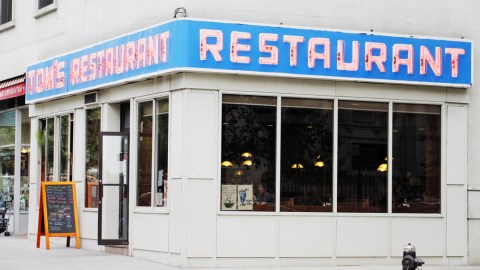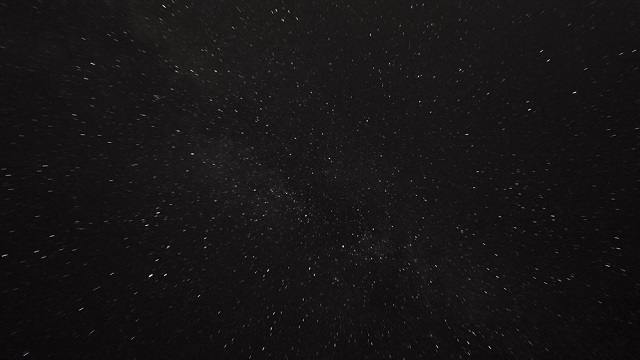Pay Now, Consume Later

Jerry Seinfeld is not a fan of the check-at-the-end-of-the-meal-system. When you sit down to a meal, Seinfeld explains in the opening monologue of The Stock Tip, you’re hungry and money has no value to you. “You’re like the ruler of an empire,” ordering indiscriminately, “‘More drinks! Appetizers! Quickly, quickly! It will be the greatest meal of our lives!’” But at the end of the meal, the check comes. Now you’ve eaten, you’re anything but hungry, and you’re mystified by the total. “‘What is this?’” people ask, passing the check around the table, “‘Does this look right to you? We’re not hungry now – why are we buying all this food?’”
A new book, just out last month, by social psychologists Elizabeth Dunn and Michael Norton, tells us that there’s plenty of good research to back up Jerry’s complaint. The book, Happy Money, Dunn told me over the phone, aims to “get people to stop and ask, ‘is spending this money going to make me happier?’” Across five chapters, the book offers specific (but flexible) research-based strategies to help people maximize the happiness they get out of their money in their daily lives. Among their recommendations: spend money on others, invest in experiences instead of material goods, and when you do spend money on yourself, try to make it a treat.
But the advice that backs up Jerry’s dissatisfaction is summed up by the title of the book’s fourth chapter, Pay Now, Consume Later. The underlying idea is that because spending money can be painful, paying detracts from people’s enjoyment of an experience. Imagine you go out to a fancy sushi restaurant for your anniversary and every time you reach for a piece of a delicious dragon roll the waiter comes over and ask you to fork (or should it be chopstick?) over three dollars. So, rather than pay-as-you-go, Dunn and Norton suggest that people will be happier if they can separate the pleasure of an experience, like a meal or a vacation, from the pain of paying for it.
Beyond separating payment from an experience, Dunn and Norton also explain that people are better off paying for something first and consuming it later – and, if possible, much later. That’s why paying at the end of a meal will make people less happy than paying at the beginning, and they may be happiest if they can pay for their meal well in advance.
One reason paying at the end makes people less happy is based on what Nobel Prize-winning psychologist Daniel Kahneman calls the peak-end rule – when people think back on an experience, their memory is largely determined by its peak (the high or low point of the experience) and its end. So ending a meal with the check rather than, say, a delicious desert, can undermine people’s whole memory of the experience (Paul Rozin has done some research specific to meals and the peak-end rule that I discuss here).
A second reason not to end with the check, as Jerry’s rant implies, is that by the end of the meal, most of the joy of the experience is behind you. As he puts it, “you’ve got the pants open, you’ve got the napkins destroyed, cigarette butt in the mashed potatoes.” You’re paying for something that’s in the past when, according to Dunn and Norton, you’d be much better off if the pleasant experience you were paying for were still to come.
The third reason not to pay at the end is that you’re likely to end up paying for more food than you actually needed because ordering it was so painless. As Jerry says, “before you eat, money has no value.” Sure, people may occasionally recoil at an item that looks expensive on the menu, but because they don’t have to pay the bill until later, the price often fails to stop people from ordering way more than they need.
The obvious solution to Jerry’s problem seems to be moving the check to the beginning of the meal. That would be an improvement, Dunn told me, but there’s still on hurdle to clear: hunger. Even if people pay up front (which should improve their tendency to over-order) the problem is, in Jerry’s words, “you don’t care about money when you’re hungry.” As experience (and research) confirms, people buy more food when they’re hungry (a brand new study by Brian Wansink finds that people buy more high-calorie foods when hungry as well). So even in the pay-at-the-beginning system people will often end up overspending and have leftovers at the end of the meal. That might not be the worst thing in the world, but there is an even better solution: Pay in advance.
The idea might not be suited for trips to the drive-thru window at Burger King, but for a visit to a nice restaurant on a special occasion, it might be nice if you could pay in advance. That would help you get around all the problems with paying-at-the-end-system, and (as long as you aren’t hungry when you place the order) it would improve on the pay-at-the-beginning-system, too. But wait, there’s more! When you pay in advance, not only will the meal be more likely to feel free once it rolls around, you’ll also get the additional benefit of enjoying the anticipation of the meal. This is what Dunn and Norton call the “drool factor.” While you count down the days until your special meal, you’ll get the pleasure of imagining how wonderful it will be.
Some restaurants, like Grant Achatz’s Alinea in Chicago, have already adopted the pay-in-advance-system. Alinea sells “tickets” for meals as far as two or three months in advance. When you show up you’ve been dreaming about the meal for weeks and, when you’re done, there’s no bill to pay. Alinea, it seems, has infused their thinking with the wisdom of French novelist Gustave Flaubert who wrote that, “Pleasure is found first in anticipation, later in memory.” I’m not sure how Jerry would feel about waiting that long – he, George, and Elaine couldn’t even make it through a 22-minute episode before giving up in The Chinese Restaurant – but it would probably be better than getting the check at the end.
Image courtesy fo Shutterstock





